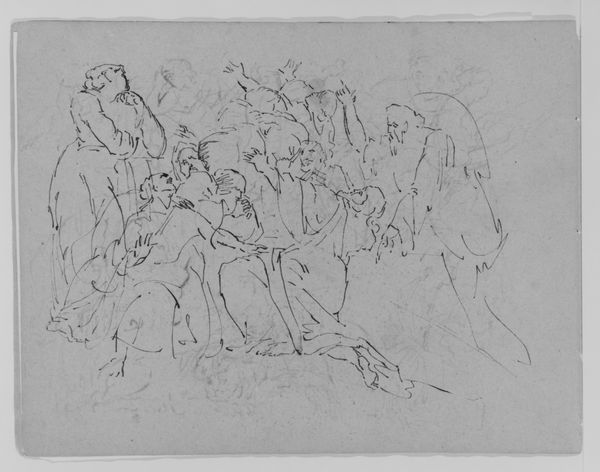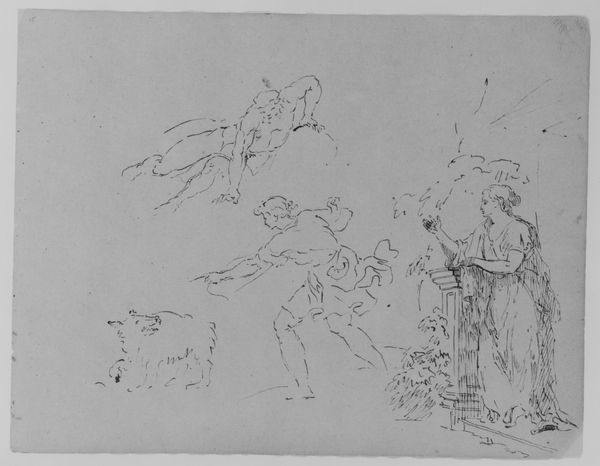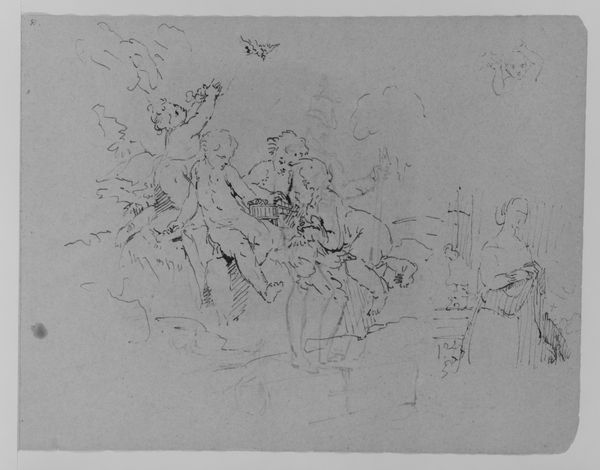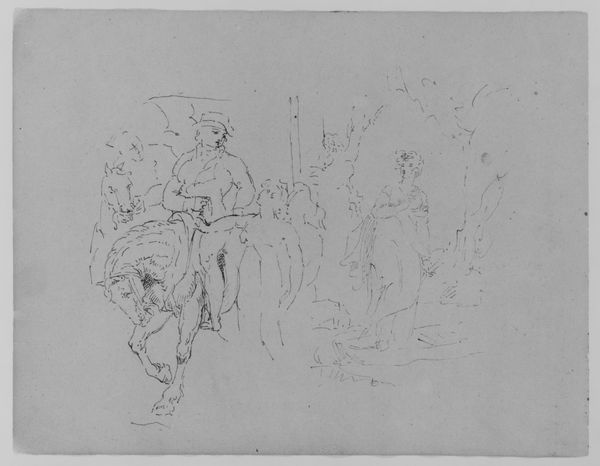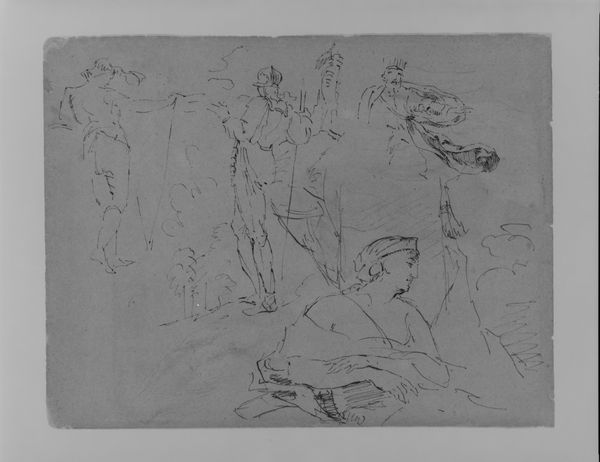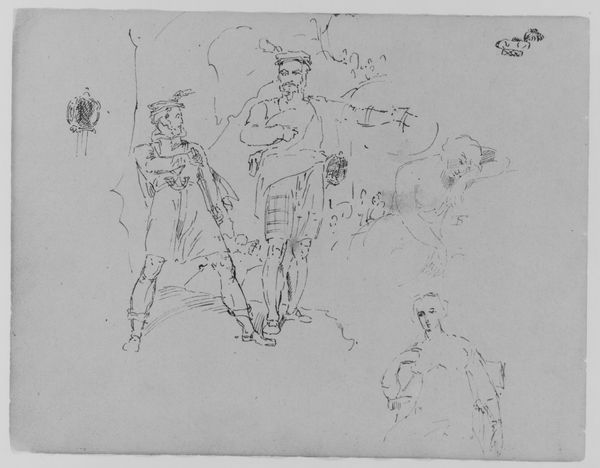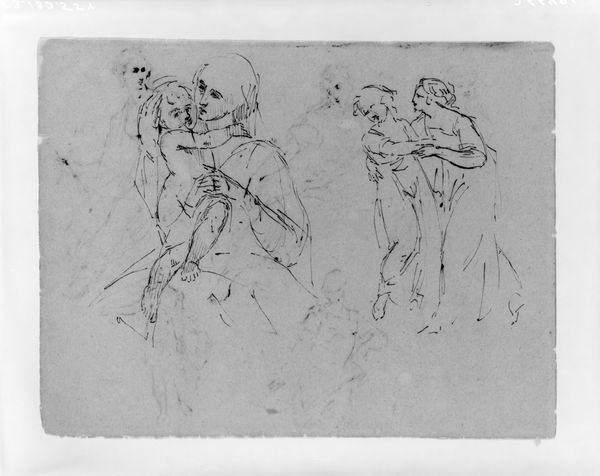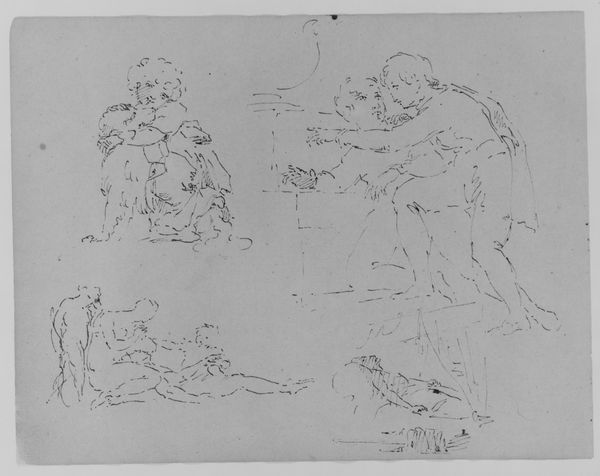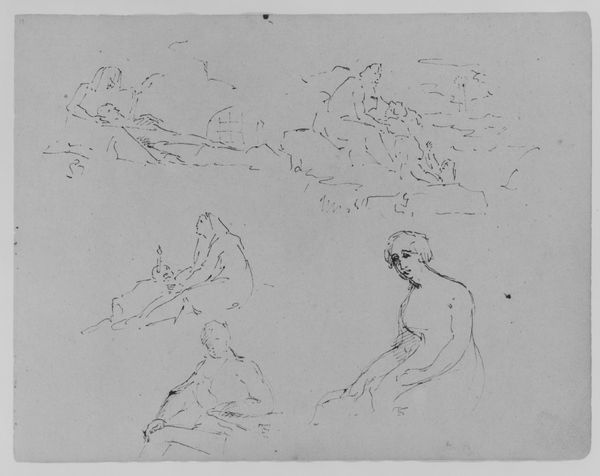
drawing, paper, ink
#
portrait
#
drawing
#
figuration
#
paper
#
ink
#
romanticism
#
horse
#
men
#
nude
Dimensions: 9 x 11 1/2 in. (22.9 x 29.2 cm)
Copyright: Public Domain
This sketchbook page was made by Thomas Sully in the United States, during the 19th century. The artist captures the nuances of human form and expression in his pencil sketches. Sully was working at a time when American art institutions were still developing, and artists often looked to Europe for training and inspiration. Sully studied in London with Benjamin West, who encouraged him to emulate the grand manner of British portraiture. But we see here that Sully was also interested in the informal and intimate aspects of human life, not just the public display of wealth and power. How does this image create meaning through its visual codes, cultural references, and historical associations? The casual poses of the figures, the lack of idealization, and the focus on everyday life suggest a shift away from the formality of earlier American art. These more intimate studies reflect the changing social and cultural values of the nation, and the rise of a more democratic and individualistic society. Historians can consult Sully’s papers and other primary sources to learn more about the artist's intentions and the social context in which he worked. We understand that art is contingent on its time.
Comments
No comments
Be the first to comment and join the conversation on the ultimate creative platform.

